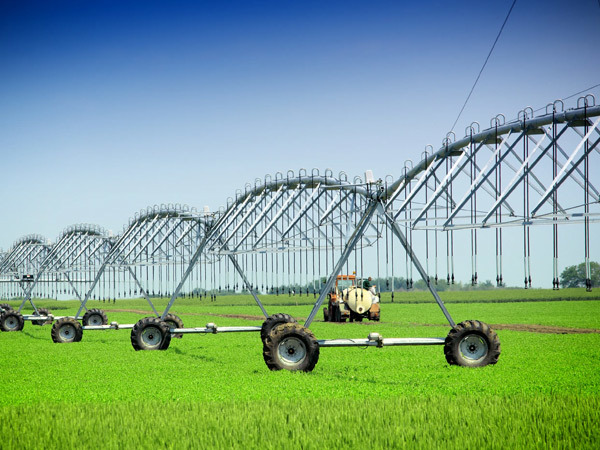Exploring the Advantages of Electric Center Pivot Irrigation Systems for Modern Agriculture
Release time:
Sep 30,2025
Exploring the Advantages of Electric Center Pivot Irrigation Systems In today's fast-paced agricultural landscape, efficiency and sustainability are paramount. Electric center pivot irrigation systems have emerged as a cutting-edge solution to meet the growing demands of modern farming. These systems not only optimize water usage but also enhance crop yield, making them an indispensable tool for f
Exploring the Advantages of Electric Center Pivot Irrigation Systems
In today's fast-paced agricultural landscape, efficiency and sustainability are paramount. Electric center pivot irrigation systems have emerged as a cutting-edge solution to meet the growing demands of modern farming. These systems not only optimize water usage but also enhance crop yield, making them an indispensable tool for farmers worldwide. In this article, we will explore the numerous advantages of electric center pivot irrigation systems, dissecting their operational mechanics and discussing their impact on agricultural productivity.
Table of Contents
- 1. Introduction to Electric Center Pivot Irrigation Systems
- 2. How Electric Center Pivot Irrigation Systems Work
- 3. Key Benefits of Electric Center Pivot Irrigation Systems
- 3.1 Water Efficiency and Conservation
- 3.2 Cost Savings on Energy and Resources
- 3.3 Enhanced Crop Yield and Quality
- 3.4 Labor Reduction and Automation
- 3.5 Environmental Sustainability
- 4. Challenges and Considerations
- 5. Future Trends in Electric Center Pivot Irrigation
- 6. Frequently Asked Questions
- 7. Conclusion
1. Introduction to Electric Center Pivot Irrigation Systems
Electric center pivot irrigation systems represent a significant advancement in agricultural technology. These systems rotate around a central pivot, delivering precise amounts of water to crops in a highly efficient manner. Unlike traditional irrigation methods, which can lead to overwatering or underwatering, electric center pivots allow for tailored irrigation schedules based on specific crop needs and environmental conditions.
2. How Electric Center Pivot Irrigation Systems Work
At the core of an electric center pivot irrigation system is a series of connected pipes mounted on wheeled towers. These systems operate on electric motors that rotate the pivot around the field, ensuring even distribution of water. Sensors and controllers are often integrated to monitor soil moisture levels, weather conditions, and crop growth stages, enabling real-time adjustments to the irrigation process.
The main components of an electric center pivot system include:
- Control Panel: This is the brain of the system, allowing farmers to set schedules, monitor performance, and make adjustments remotely.
- Pivots and Towers: These structures support the irrigation pipes and facilitate movement across the field.
- Water Supply System: This system connects to the main water source, delivering water to the center pivot system.
- Sprinklers: Positioned along the pivot, they disperse water evenly across the crops.
3. Key Benefits of Electric Center Pivot Irrigation Systems
3.1 Water Efficiency and Conservation
One of the most significant advantages of electric center pivot irrigation systems is their ability to conserve water. These systems are designed to minimize water waste through efficient application techniques and precise control mechanisms. By applying water at optimal rates, farmers can significantly reduce runoff and evaporation, ensuring more water reaches the crops' root zones.
Moreover, many electric center pivot systems feature advanced technology such as variable rate irrigation (VRI), which allows for tailored water application based on the specific requirements of different field zones. This capability leads to enhanced water savings and promotes sustainability in agricultural practices.
3.2 Cost Savings on Energy and Resources
Electric center pivot systems can result in substantial cost savings in the long run. Although the initial investment may be higher than traditional irrigation methods, the operational costs are often lower due to energy-efficient electric motors and reduced water usage. Furthermore, modern systems require less labor, which translates into lower labor costs overall.
Farmers can also take advantage of government incentives and programs aimed at promoting water conservation and sustainable practices. These opportunities can offset initial investments and enhance the overall return on investment (ROI) for electric center pivot systems.
3.3 Enhanced Crop Yield and Quality
With precise water management, electric center pivot irrigation systems can lead to improved crop quality and yield. Consistent water supply and uniform distribution create optimal conditions for plant growth. This results in healthier crops that are less susceptible to drought stress and diseases, ultimately enhancing the overall yield per acre.
Additionally, by implementing advanced monitoring technologies, farmers can also adjust nutrient applications based on real-time data, further improving crop quality and marketability.
3.4 Labor Reduction and Automation
As agricultural labor becomes increasingly scarce, electric center pivot irrigation systems offer a practical solution by reducing the reliance on manual labor. Automation features allow for remote operation, enabling farmers to manage large fields without the need for constant oversight. This factor not only saves time but also allows farmers to focus on other essential aspects of their operations.
With the ability to program irrigation schedules and monitor system performance remotely, farmers can make informed decisions without being tied to the field. This level of control enhances efficiency and productivity in modern farming.
3.5 Environmental Sustainability
Electric center pivot irrigation systems contribute significantly to environmental sustainability. By optimizing water usage and reducing chemical runoff, these systems help preserve local ecosystems and maintain water quality in surrounding areas. Furthermore, efficient resource management practices promoted by these systems align with global sustainability goals and initiatives within the agricultural sector.
As demand for sustainable farming practices continues to rise, adopting electric center pivot irrigation systems positions farmers at the forefront of environmentally responsible agriculture.
4. Challenges and Considerations
While electric center pivot irrigation systems offer numerous benefits, they are not without challenges. Farmers must consider factors such as initial costs, system maintenance, and the need for a reliable power source. It's essential to conduct thorough research and planning before investing in these systems to ensure they align with specific agricultural needs and conditions.
Additionally, integrating technology into traditional farming operations may require training and adaptation for some farmers. Embracing this change is crucial for maximizing the advantages of electric center pivot irrigation systems.
5. Future Trends in Electric Center Pivot Irrigation
The future of electric center pivot irrigation systems looks promising, with advancements in technology driving further improvements. Innovations such as IoT (Internet of Things) integration, machine learning algorithms, and data analytics are set to revolutionize how farmers manage their irrigation systems.
As these technologies evolve, we can expect more precise water management approaches, advanced predictive analytics for crop needs, and enhanced automation capabilities. These developments will not only optimize water usage but also support farmers in making data-driven decisions, ultimately leading to increased productivity and sustainability.
6. Frequently Asked Questions
What is an electric center pivot irrigation system?
An electric center pivot irrigation system is a modern irrigation method that uses a rotating pivot system powered by electric motors to deliver water efficiently to crops in a field.
How does an electric center pivot system save water?
These systems feature precise water application techniques and can use technologies like variable rate irrigation (VRI) to minimize waste and ensure that water reaches the crops’ root zones effectively.
What are the cost considerations for electric center pivot systems?
While the initial investment may be higher than traditional irrigation methods, operational costs are typically lower due to energy efficiency, reduced water usage, and decreased labor requirements.
Can electric center pivot systems improve crop yield?
Yes, by providing consistent and uniform water application, these systems promote healthier crops, leading to improved yield and quality.
What are the environmental benefits of using electric center pivot irrigation?
These systems help conserve water, reduce chemical runoff, and promote sustainable farming practices, contributing to overall environmental sustainability.
7. Conclusion
Electric center pivot irrigation systems represent a transformative approach to modern agriculture, offering a wealth of advantages ranging from water efficiency to enhanced crop yield and quality. As farmers navigate the challenges of a changing climate and increasing production demands, these systems provide a reliable and sustainable solution. By embracing electric center pivot irrigation, farmers can position themselves for success in an increasingly competitive agricultural landscape, ensuring they not only meet today’s needs but also secure a sustainable future for generations to come.
Learn more about industry dynamics
New customers enjoy 10% product discount
PRODUCT CENTER
CONTACT US
Address: 2-1-2301, Phoenix International Plaza, High-tech Zone, Jinan City, Shandong Province
Quality of service to win customer satisfaction


Shandong Yihe Agricultural Technology Co., Ltd.




